As 11-time judge Ted Chapin put it, "What you're always looking for are the people who have all four songs adding up to something extraordinary." Contestants are tasked not just with singing four theatrical selections, but with presenting a diverse and compelling program that demonstrates their abilities across multiple genres and contrasting idioms. Review the insights below as you consider how you will "put together" your own package for the Lenya Competition.
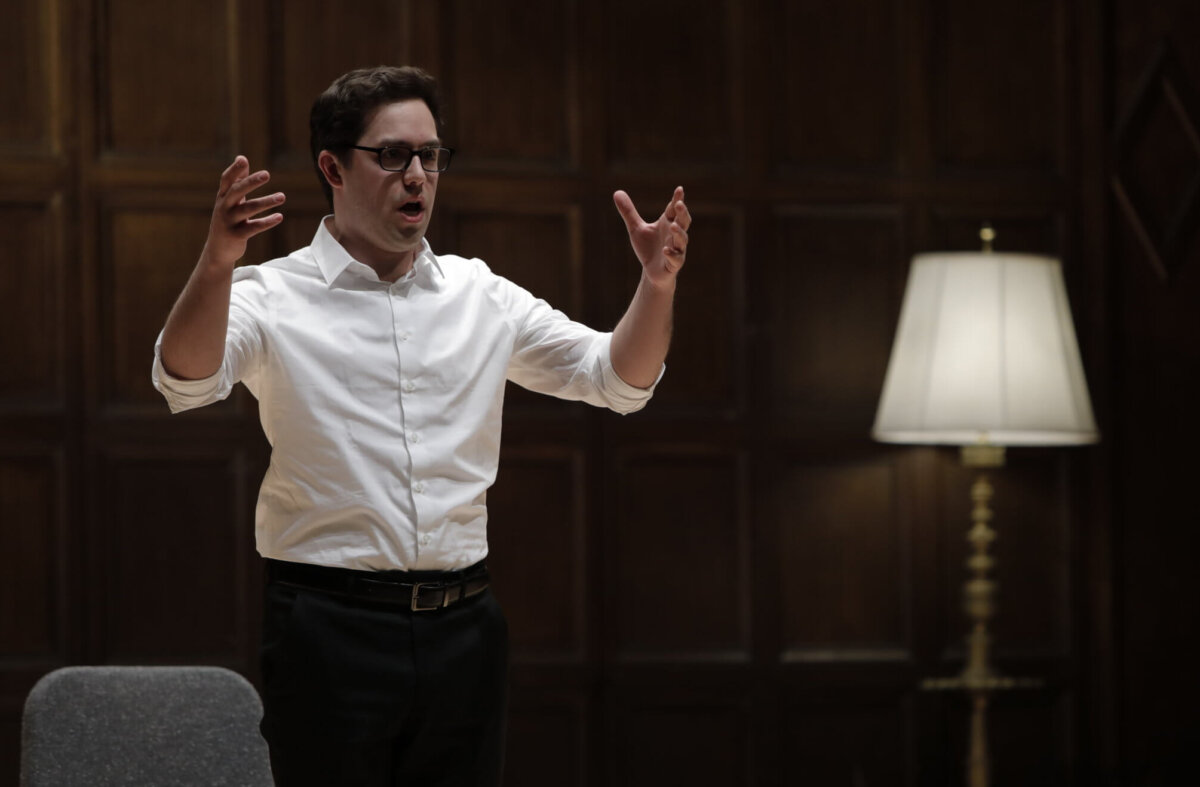
Crafting a Program
Choose material that you could believably perform if cast in a full-scale professional production of the work, appropriate for your vocal and acting ability, as well as age, type, and range. Know the dramatic context of each number: character, plot, scene, setting. Avoid singing a world-weary song of bitterness and disillusionment for a 45-year-old character (“Losing My Mind”) if you’re only 22 (and look it). Think of your program as an opportunity to enact four different characters. Select material that you can relate to your own experience and “personalize.” But don’t think of songs as merely popular numbers, stripped of original theatrical contexts. There is a time and place for jazz or cabaret versions, personal arrangements, and out-of-context interpretations, but the Lenya Competition is not such an occasion.
The Lenya Competition recognizes non-traditional gender casting as a growing practice in the performing arts, as well as the issues that the practice raises in terms of transposition, characterization, etc., particularly outside a full-scale production of the work. Contestants should be confident that they can sing a selection for a role as its composer intended/notated, regardless of gender, and that they would be dramatically viable in the role in a professional staging. Keep in mind the guidelines regarding transpositions, namely that opera/operetta selections and Weill’s pre-Broadway repertoire must be sung in original keys. There have been a number of successful examples of “gender swapped” performances throughout the competition’s history, perhaps most memorably in the 2007 finals when Brian Charles Rooney earned a discretionary prize for a stellar performance of “Lucy’s Aria” sung at pitch. At that time, Brian had just finished playing the role of Lucy in the 2006 revival of The Threepenny Opera on Broadway starring Alan Cumming.
Consider the content, variety, and impact of the program as a whole, with diversity of vocal idioms, musical styles, character types, and emotional dynamics. Avoid a program of four similar numbers that may come across as “one-note.” If you have a number that is sure to make the audience laugh, can you follow it up with one that will make them cry? Play to your strengths. You might think of your program metaphorically as something akin to choosing your four favorite outfits to take along on an important trip, each responding to differing circumstances and occasions. They should all “fit” your talent so well that you feel good about putting them on.
Judges score your performance of each number on a scale from 1 to 10. A fifth category, “overall impact, difficulty, diversity (of language, idioms, vocal production), and risk-taking” allows each to award a maximum of 50 points. It is very difficult to overcome one low-scoring number, so make sure you have four “winners” to offer.
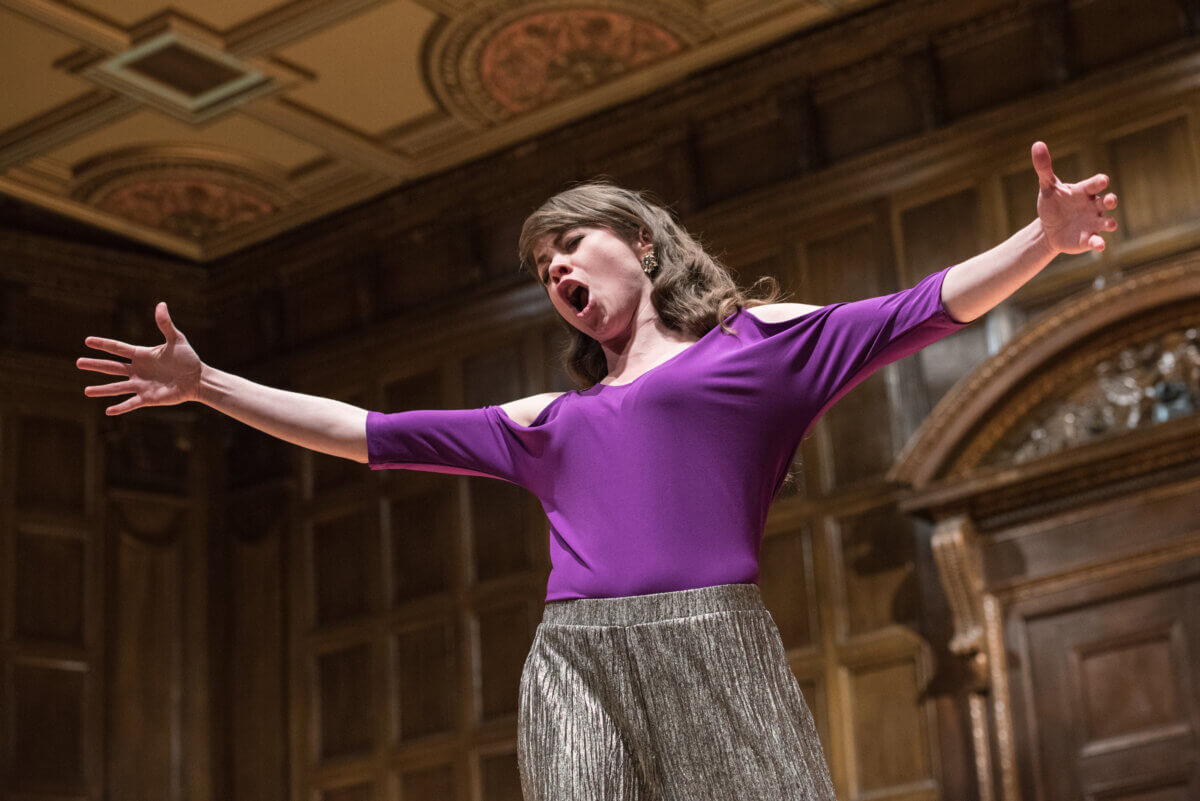
Singing the Scene/Speaking the Song
Every effective song or aria arises from character, plot, or situation. It is usually a type of sung monologue or one side of a conversation. The character is telling a story, articulating a need or a demand, seeking an objective, or explaining something about him/herself. It is crucial that you know who your character is, what just happened to prompt you to react in this way, what the “objective” is as you move from the beginning to the end of the number. Rehearse your songs as spoken monologues. Find the “beats” (transitions), divide it into sections, paraphrase it, and personalize it so that it has “stakes” for you.
Live in the dramatic moment, as if you are inventing the lyric as you go. If you are addressing another character in the drama, visualize your imaginary scene partner(s) in a specific place. If they are on stage with you, position them so that the audience can be included in your communication. Every song/aria takes place “somewhere,” and you need to imagine that somewhere and then inhabit that space. These “somewheres” will, of course, change for successive numbers.
Singing in the Lenya Competition should not resemble a recital. Unless you are using the piano as part of your stage setting or as a prop or prop holder, get away from it! Nothing is more untheatrical than standing in the crook of the piano and “performing.” A singing actor has a wide range of possibilities for effectively conveying a theatrical number, ranging from the extreme of highly staged, stylized, or choreographed to near-motionless internalization. Don’t be afraid to move and to gesture, but it must originate from thought and purpose. Artificial or unmotivated movement (“strolling,” “wandering,” “fidgeting”) and meaningless hand gestures are the quickest way to demonstrate disconnectedness and the surest way to upstage yourself. As one of our judges once advised a contestant, “don’t assign tasks to your hands when they aren’t up to the job.” Avoid “playing the room” as if this were a presentational performance, unless the selection is one of those where the character comes down to the footlights and sings directly to the audience (“One Life to Live” from Lady in the Dark, for example).
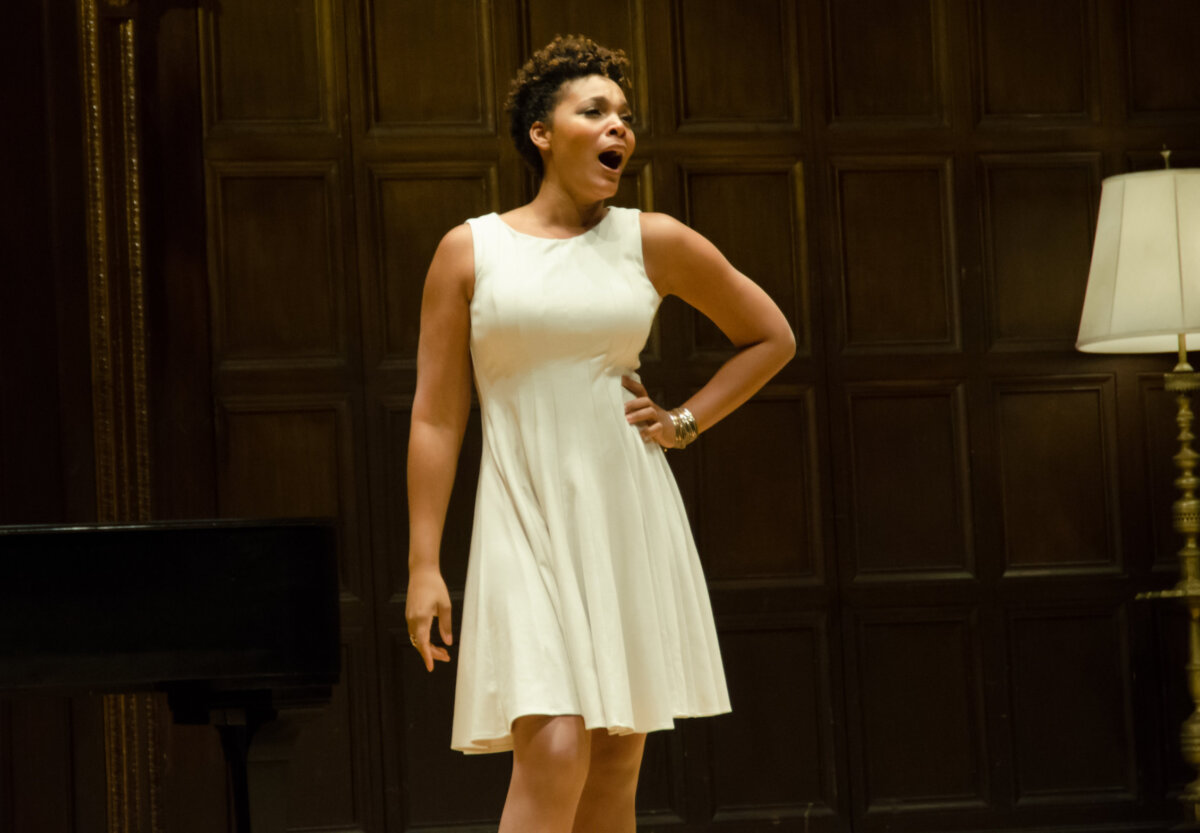
Dressing for Success
Because this is not a recital or concert, formal attire is not appropriate, unless this “works” for all four characters you are playing. (It’s hard to make Eliza Doolittle believable in “All I Want Is a Room Somewhere” when she’s wearing an evening gown.) Instead, choose something casual or neutral, depending on what you’re performing. Some contestants have varied their appearance by removing/adding a jacket, cap, scarf, shoes, or tie. “Letting your hair down” or “rolling up your sleeves” can communicate a change of persona. Be creative, but don’t feel compelled to “costume” each number. Decide what is essential in portraying each character. Less is probably more, as your presentation is more akin to an audition than to a fully-executed production.
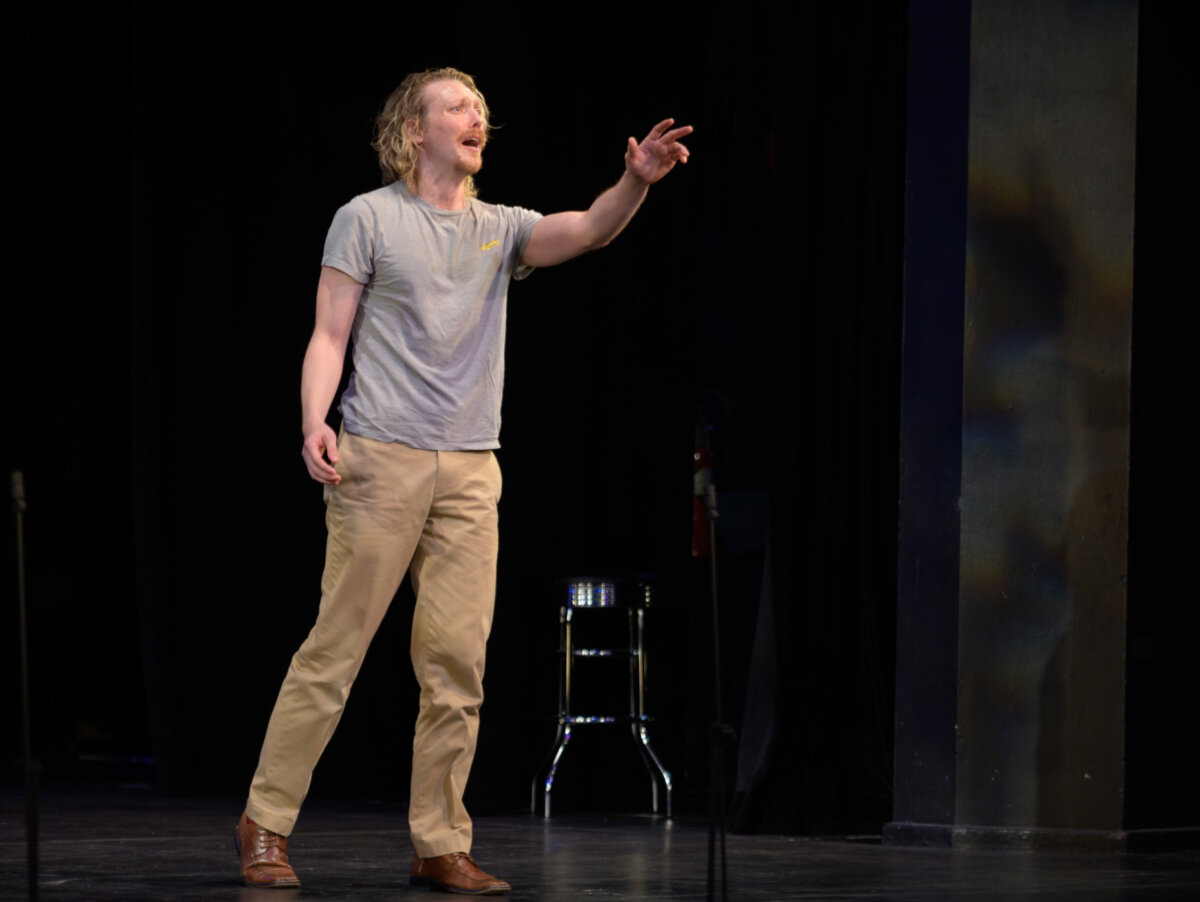
Playing Objectives
An actor can’t realistically play an emotion or a mood (“mood” spelled backwards is “doom”). Don’t “present generalized emotions” or “play-act” grief or anger; enact a character’s needs, tell a story, share your experience of the character’s journey, moment by moment. Repetitions of lyrics need to be motivated by the impediments to or success in attaining a character’s objectives. Remember that lyrics are thoughts made audible. Don’t give lip-service to the thoughts. Actually have them, as they cause the lyric to be invented by the character.
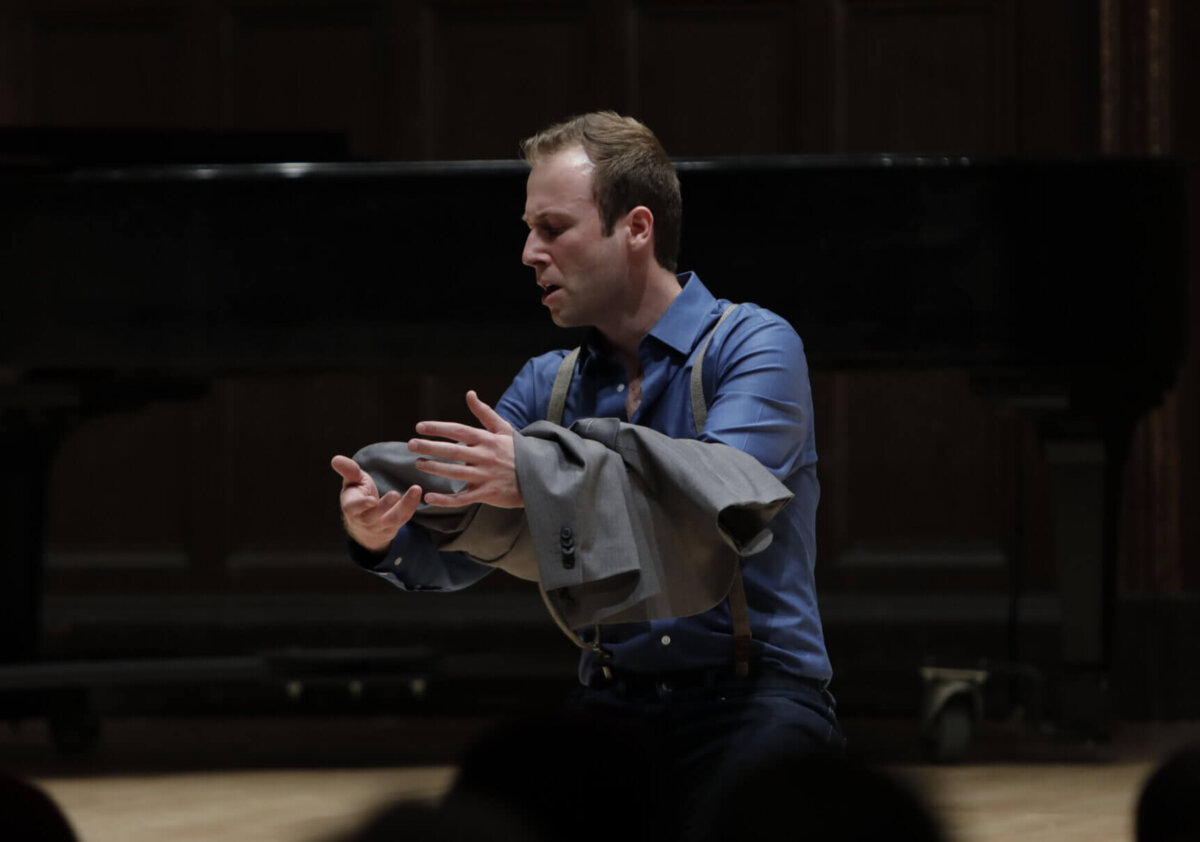
Utilizing Props
Strategic but limited use of realistic props can sometimes help communicate situation and intention, but don’t go overboard. If you use imaginary props (writing a letter, drinking poison, holding a baby, etc.), make sure that you know where these props are at all times. They shouldn’t just appear and disappear out of nowhere. You’ll have a chair and a stool to work with; if that isn’t enough, remember that rarely is an effective song or aria about “things” on stage with you.
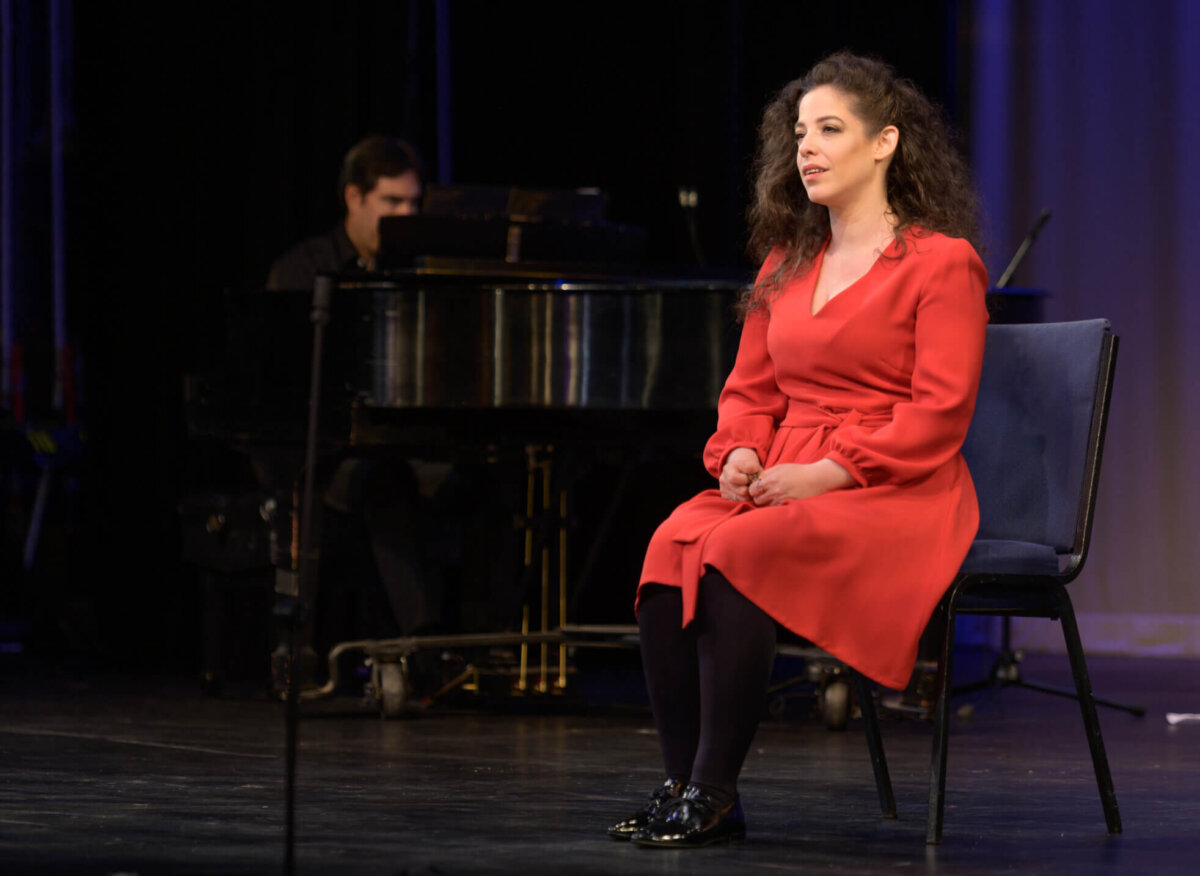
Accompanying your Singing/Transposing your Song
Choose the “version” of each song and aria very carefully. Usually the best choice is the one in the full piano-vocal score of the opera or musical. Often “Selections” from shows have been transposed and simplified to enable performance by virtually anyone, but idiomatic presentation by no one; they almost always differ substantially from the version presented onstage originally. Make sure that the version in the various “Singer’s Musical Theater” anthologies or those you can download online are accurate reproductions of the actual piano-vocal score of the work.
In the Lenya Competition the piano is your orchestra, even though it’s not in the pit. Even the most accurate piano reductions of works composed for voice and orchestra are intended for rehearsals and are seldom pianistic. They often double the voice throughout, especially in scores from the American musical theater. Playing exactly what’s on the published page, as if it were a composition for voice and piano, seldom conveys what one would hear in the theater. Therefore, you and your accompanist should perform something which faithfully transmits the original (without a sense of “arrangement”) but which allows the voice more freedom and flexibility than does constant doubling of the melody. This will also foster greater intelligibility of lyrics. The “fill” between phrases or under sustained notes, of course, is crucial to the idiom. Piano reductions of operas tend to reflect the orchestral versions more judiciously and may not require adjustments.
When musicals have evolved over time into several very different authorized versions (e.g., Anything Goes, Show Boat, Company, Sweeney Todd), choices may become even more complex and fraught. While the original is generally to be preferred, make sure you are aware of which version you are presenting and how it relates to the original. Transposition is commonplace in musical theater, less so in opera. For the Lenya Competition, transposition is generally allowed for the two musical theater categories, but not for the opera/operetta or pre-Broadway Weill selections. Be judicious, however, as often the range of a vocal number is an essential component of characterization. There’s a reason that the “earth mothers” in Rodgers & Hammerstein’s musicals are contraltos and the young heroines are lyric sopranos.
If you are in doubt about any of this, feel free to consult with the Competition administrator. If you are having trouble locating the original version of your Weill selection, contact the KWF staff, who will be happy to provide a copy.